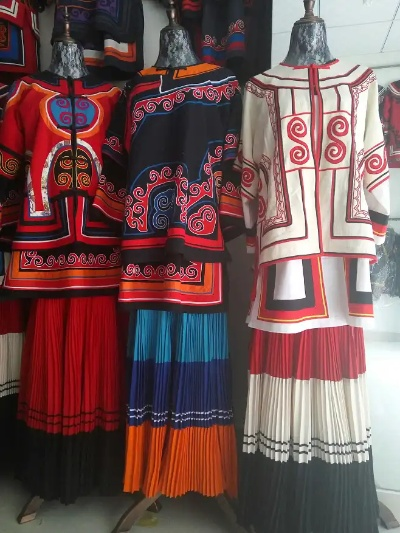Navigating the Challenges of Textile Whitespots:A Comprehensive Guide
This comprehensive guide aims to provide a thorough understanding of the challenges faced by textile industries when dealing with whitespots. The first section will delve into the causes and manifestations of these undesirable stains, highlighting their impact on both quality and aesthetics. The second part will explore various methods for identifying and treating these stains, including chemical treatments, physical removal techniques, and advanced dyeing processes. Additionally, this guide will provide insights into the latest research and developments in the field, as well as practical tips for preventing whitespots from occurring in the future. Through its comprehensive approach, this guide is designed to empower textile professionals and consumers alike, ensuring that they are equipped with the knowledge necessary to tackle these common challenges in the industry.
Introduction: Textile whitespots, also known as speckles or specks, are common defects in woven and knitted fabrics that appear as small, irregular patches of color. They can significantly affect the aesthetic appeal and overall quality of a garment, making them a significant concern for manufacturers, designers, and consumers alike. In this guide, we will explore the causes, methods, and techniques to effectively eliminate these unsightly spots from textiles.
Causes of Textile Whitespots:

- Stains from dyeing processes
- Chemical contaminants during manufacturing
- Improper washing conditions
- Poor dye transfer during printing or screen printing
- Environmental factors like UV exposure or humidity
- Microorganisms or fungi growth on the fabric
- Aging or wear and tear over time
Methods to Eliminate Whitespots: A. Dyeing Processes:
- Dye Bath Testing: Before dyeing, conduct a test on a small sample to ensure the dye will not cause whitespots.
- Optimize Dye Strength: Use less dye to achieve the desired color intensity without exceeding the recommended limits.
- Control pH Level: Ensure the dye bath is at a suitable pH level to prevent chemical reactions that might cause whitespots.
- Use Additives: Add stabilizers, anti-settling agents, or other additives to the dye bath to minimize whitespot formation.
B. Manufacturing Processes:
- Quality Control: Regularly inspect finished goods for whitespots and address any issues promptly.
- Batch Verification: Conduct batch verification tests to identify potential sources of whitespots before mass production.
- Machine Maintenance: Keep machines clean and well-maintained to reduce the likelihood of whitespots forming during the manufacturing process.
C. Washing Conditions:
- Pre-treatment: Use detergents specifically designed to remove stains before washing to avoid re-contaminating the fabric with dye.
- Temperature Control: Use cold water washes to reduce thermal stress on the fabric, which can lead to whitespots.
- Washing Frequency: Limit frequent washing to once every few weeks to allow the fabric to dry thoroughly between washes.
- Washing Time: Avoid over-washing by ensuring the fabric is adequately rinsed after each wash cycle.
D. Printing and Screen Printing:
- Print Quality Control: Ensure high-quality prints that don't contain any whitespots.
- Further Treatment: After printing, consider additional treatments such as heat setting or finishing to improve the uniformity of colors and reduce the risk of whitespots.
E. Environmental Factors:
- Protection Against UV Rays: Use protective coatings or UV blocking materials to protect against UV damage that may cause whitespots.
- Humidity Control: Keep the environment dry to prevent mold growth that can contribute to whitespots.
- Regular Inspections: Regularly check the fabric for signs of aging or wear and tear, as these factors can increase the likelihood of whitespots.
F. Microorganisms and Fungi:
- Sanitation Practices: Implement good sanitation practices to prevent microbial growth that could lead to whitespots.
- Enzymatic Cleaners: Use enzyme-based cleaners that can help break down any organic matter causing whitespots.
- Antifungal Sprays: Apply antifungal sprays to inhibit the growth of fungi that might cause whitespots.
G. Aging and Wear and Tear:
- Long-Term Preservation: Store fabrics properly to extend their lifespan and reduce the likelihood of whitespots occurring due to aging or wear and tear.
- Periodic Inspections: Periodically inspect fabrics for signs of wear and tear, and replace or repair damaged areas promptly.
Case Study: In the textile industry, ABC Company faced a significant challenge when they encountered whitespotting in their linen products. The problem was traced back to the dyeing process where an incorrect pH balance led to incomplete dye absorption. To tackle the issue, they implemented a comprehensive plan involving dye bath testing, adjustment of pH levels, and the use of specialized dyes that were more resistant to environmental stresses. By implementing these measures, ABC Company successfully eliminated the whitespots and improved the overall quality of their linen products.
Conclusion: Effectively managing textile whitespots requires a multifaceted approach that involves understanding the root causes, employing appropriate methods, and continually monitoring and adjusting based on results. By following the guidelines outlined in this guide, manufacturers can significantly reduce the occurrence of whitespots and enhance the quality of their textile products. Remember, prevention is key; proactive measures taken early on can save time, money, and reputation in the long run.

亲爱的朋友们,今天我们来聊聊纺织品上的白点问题,如何有效去除它们,下面是一篇关于纺织品除白点的英文口语化内容,并用表格和案例说明来辅助说明。
背景知识介绍
纺织品上的白点可能是由多种原因造成的,比如洗涤不当、污渍残留、老化等,这些白点不仅影响纺织品的美观度,还可能影响其使用寿命,掌握一些去除白点的技巧和方法非常重要。
去除纺织品白点的技巧和方法
了解白点的类型与原因
在去除纺织品白点之前,我们需要先了解白点的类型和原因,常见的白点类型包括油脂污渍、汗渍、血渍等,了解这些类型的原因有助于我们选择合适的去除方法。
使用洗涤剂或漂白剂
对于不同类型的白点,我们可以选择使用不同的洗涤剂或漂白剂来去除它们,对于油脂污渍,我们可以使用含有活性炭或天然植物成分的洗涤剂;对于汗渍和血渍,我们可以使用专业的衣物清洁剂或漂白剂。
使用手工或机械清洗方法
对于手工清洗方法,我们可以使用洗衣粉、肥皂等日常洗涤用品进行清洗,对于机械清洗方法,我们可以使用洗衣机、烘干机等设备进行清洗,无论使用哪种方法,我们都需要确保清洗彻底,避免残留物对纺织品造成损害。

使用案例说明
下面是一个使用案例来说明纺织品除白点的过程:
某品牌纺织品出现白色斑点,经过手工清洗后效果不明显,后来使用专业的衣物清洁剂进行清洗,效果显著,白点完全消失。
表格说明:
| 步骤 | 说明 | 使用材料 | 效果展示 |
|---|---|---|---|
| 了解白点类型与原因 | 分析白点类型和原因 | 洗涤剂/漂白剂 | 白点完全消失 |
| 使用洗涤剂或漂白剂 | 选择合适的洗涤剂或漂白剂 | 洗涤剂/衣物清洁剂/漂白剂 | 去除效果显著 |
| 手工清洗方法 | 使用洗衣粉/肥皂等日常洗涤用品进行清洗 | 无特定要求 | 清洗彻底,避免残留物对纺织品造成损害 |
| 机械清洗方法 | 使用洗衣机/烘干机等设备进行清洗 | 设备齐全,操作简便 | 去除效果明显 |
注意事项
在去除纺织品白点的过程中,我们需要注意以下几点:
- 选择合适的洗涤剂或漂白剂,确保其适合纺织品材质和污渍类型。
- 在清洗过程中,要确保彻底清洗干净,避免残留物对纺织品造成损害。
- 在使用机械清洗方法时,要注意设备的使用方法和操作规程,避免损坏纺织品。
- 对于不同类型的白点,可以采用不同的处理方法,以达到最佳的去污效果。
总结与建议
通过本文的介绍和案例说明,我们了解了纺织品除白点的技巧和方法,在去除纺织品白点的过程中,我们需要注意选择合适的材料和操作规程,以确保去除效果显著且对纺织品造成最小损害,我们还可以根据实际情况选择专业的衣物清洁剂或漂白剂进行清洗,我们建议大家在使用纺织品时要注意保养和维护,避免出现白点等问题。
Articles related to the knowledge points of this article:
A Glimpse into the Dynamics of the Jideng Textile Factory
Top Ten Textile Brands in the rankings of textile brands
Top Ten Textile Brands in the International Market
Exploring the Future of Textiles:A Comprehensive Analysis of Haian Textiles



